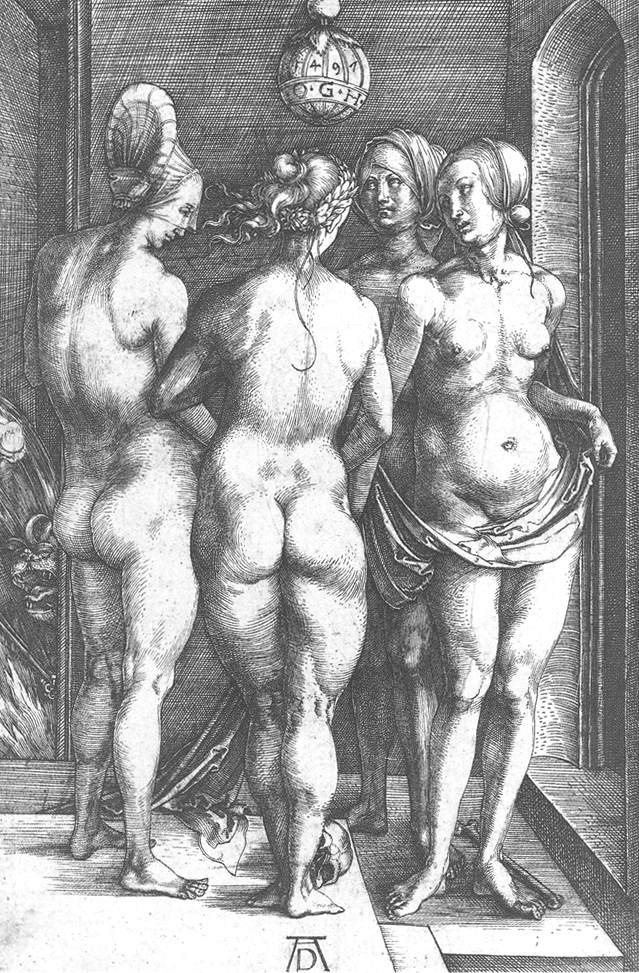
A
series of comments back and forth with
Emily Jolie have had me thinking about restriction, structure, and boundaries in our diets. I think most people who have struggled with an eating disorder can agree that food restriction plays an important, if not central, role in maintaining disordered eating patterns. These problems can be compounded if, like Emily and me, you have developed certain food sensitivities, or allergies, in the course of your travels.
Soon after I stopped binging and purging in 2004, I came down with a severe case of mononucleosis, and at the same time my digestive system went haywire. Apart from my daily exhaustion, I was also bloated, gassy, and miserable, and I spent my evenings doubled up with intestinal cramps, wondering what had gone wrong (and suspecting that I was somehow to blame). In consultation with doctors, acupuncturists, and chiropractors, I identified certain foods as being related to these symptoms -- primarily wheat and other gluten-containing foods -- and so I stopped eating them.
This restriction, at any other point in my eating disorder, might have acted as a trigger, but I had several things working in my favor. First, I was working with an amazing team of therapists, both official and unofficial (i.e. guardian angels). Second, I really, really wanted to get
well; coming down with mono in the midst of training for a marathon was a true wake-up call for me to start treating my body right. That autumn, I replaced long-distance running with yoga; I gave myself permission to take naps in all matter of places on campus; and I re-evaluated my eating patterns. Honestly, I don't know if I could have pulled myself out of bulimia without having had mono first: being so sick as to almost be dysfunctional left me no time for my eating disorder. Instead, I had to concentrate on the things that were truly important to me, like graduating from college, spending time with my boyfriend (now my husband) and planning for life after school.
Instead of seeing my digestive problems as reason to stop eating altogether, I took them as a sign that I needed to re-evaluate my diet, among other things. During my active eating disorder, I rarely ate carbohydrates apart from binges -- I reasoned that I was getting enough of them anyway in my binges, so why add fuel to the fire? When I stopped eating wheat, not only did I rule out many of my former "binge" foods -- a fortunate side-effect -- but I began to notice, over time, that I felt better if I had some kind of whole grain every day. Living in China and Brazil after graduating from college, I started to perform nutritional experiments on my own body, packing my purse with soy milk and sweet potatoes, then apples and fresh cheese, as I explored these new countries and settled back into the rhythms of my own body.
Like Emily Jolie, my body has, at times, reacted strongly to certain foods, in a way that seems outside of my control. Living within the bounds of these restrictions was liberating in the sense that I had to be creative with my diet, looking beyond the obvious food choices. In China, I discovered fresh soybeans (
mao dou), mutton skewers, egg pancakes, and any number of strange and marvelous vegetables. In Brazil, I ate
cheesy bread, mangos aplenty, dried bananas, fresh fruit juices -- and I learned to make beans, oh delightful beans! The year after college, I took full responsibility for my diet, and began to cook for myself. I consider my eating disorder to have ended at this point, a year after I stopped binging and purging, because it took that long to learn how to eat again.
Now I will eat nearly everything. My digestive problems cleared up considerably under a no-gluten diet, but even so, this summer I decided to embark upon another experiment: eating wheat again. It has gone swimmingly, so much so that I can now say that I no longer restrict any part of my diet. Was this a goal of mine? No, not specifically: my goal was to find a way of eating that sustained my health, with or without gluten. It is a happy circumstance that now I can eat gluten, but I hope that I would feel just as free and just as flexible towards food if some of those restrictions
were still in place, as they are for many people with food sensitivities and allergies. As Emily Jolie says, there can be freedom within boundaries. In my case, my old boundaries prepared me for the freedom I currently face, a freedom that would have been overwhelming if I had not taken the time to sound out the limits of what my body could take.
May all of you find some joy in food today, and some freedom within whatever limits you find yourself facing.~Ai Lu
 I am committed, for the next five years, to understanding distress from the outside, from the scientific, clinical viewpoint. But I am also committed to you, my reader, and to this, this process of writing out and writing through my past pain, in order to come to grips with all that I bring to my profession and to my present.
I am committed, for the next five years, to understanding distress from the outside, from the scientific, clinical viewpoint. But I am also committed to you, my reader, and to this, this process of writing out and writing through my past pain, in order to come to grips with all that I bring to my profession and to my present.



























